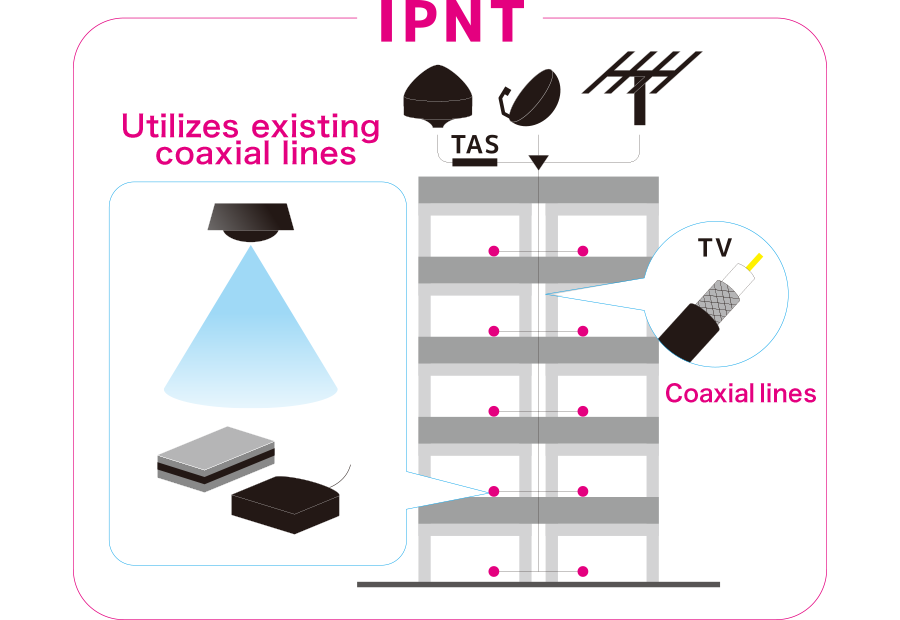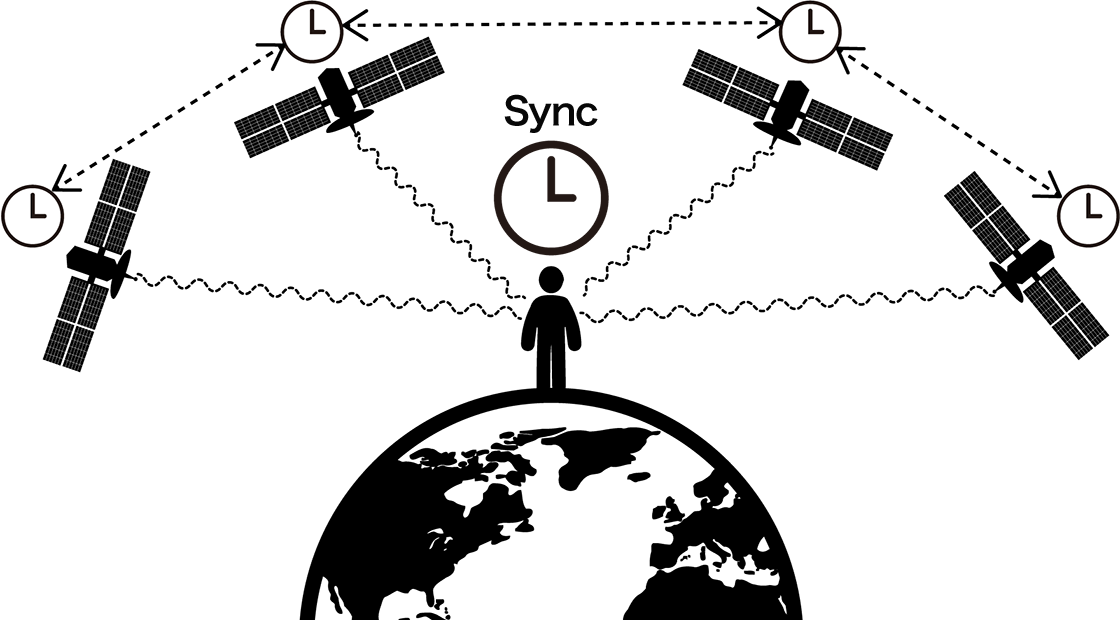Provided there is an infrastructure in place for receiving GNSS signals, the GNSS receiver allows for high-accuracy time synchronization and, therefore, positioning. However, what do you do indoors, where GNSS signals may not reach?IMES offered a system for obtaining position by transmitting GNSS signals indoors, but this system did not provide high-accuracy time synchronization.
The new iPNT method also transmits time messages with the signal to achieve high-accuracy time synchronization.
Specifically, the TAS(Time and Authentication Service) device that receives airborne GNSS signals generates its own time messages. These messages can then be transmitted internally using pre-existing television infrastructure.
An iPNT transmitter is installed in a location where you wish to send GPS signals (iPNT signals), and the iPNT signals (GNSS signals) are then transmitted as you would with IMES.
A GNSS receiver captures these signals and decodes the position data and message to interpret the time and output a high-accuracy synchronous signal (1PPS).

High-accuracy time synchronization is already widely used in the field of communication for mobile devices and objects.
GNSS is used in order to synchronize the same, precise time across a wide area.
Positioning using GNSS first requires synchronizing time between a GNSS satellite and receiver. These clocks allow for measuring distance (pseudo distance) from the satellite.
In other words, the GNSS system functions by controlled atomic clocks circling the Earth and small GNSS receivers synchronizing with these atomic clocks in order to obtain accurate positioning.

1.
Measures the distance from the satellite to the receiver (pseudo distance).
2.
Measures the time gap from the time the signal is sent from the satellite to when it reachesd the receiver, allowing for a pseudo distance measurement.
3.
The GNSS satellite is equipped with an atomic clock for constant high accuracy.
4.
The clock in the receiver is an inexpensive clock that does not synchronize with the satellite. The key is decrypted and the clocks are synchronized.
5.
After synchronization, only one satellite is used for the time.
6.
The GNSS receiver outputs a PPS (pulsed) signal to synchronize with the satellite.
